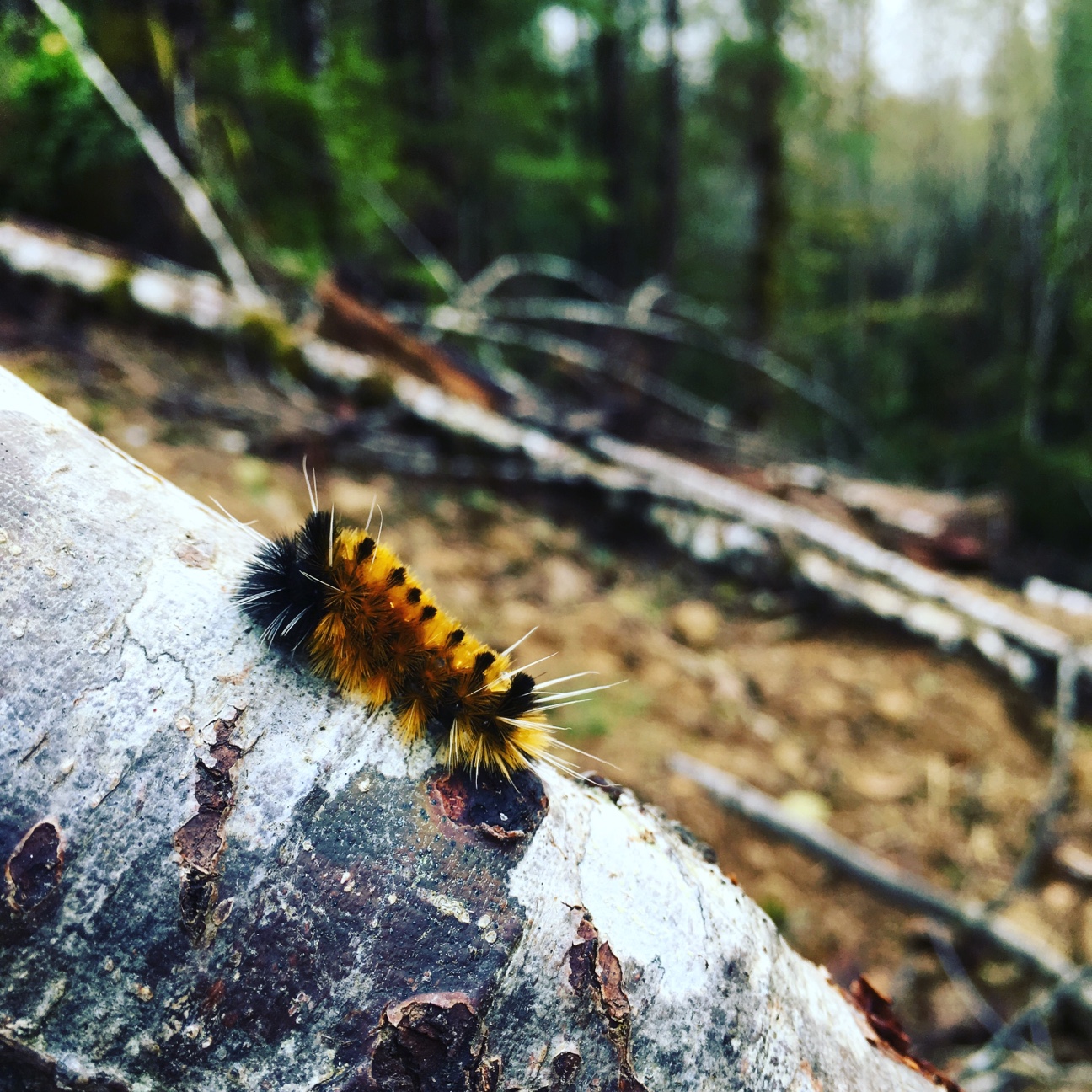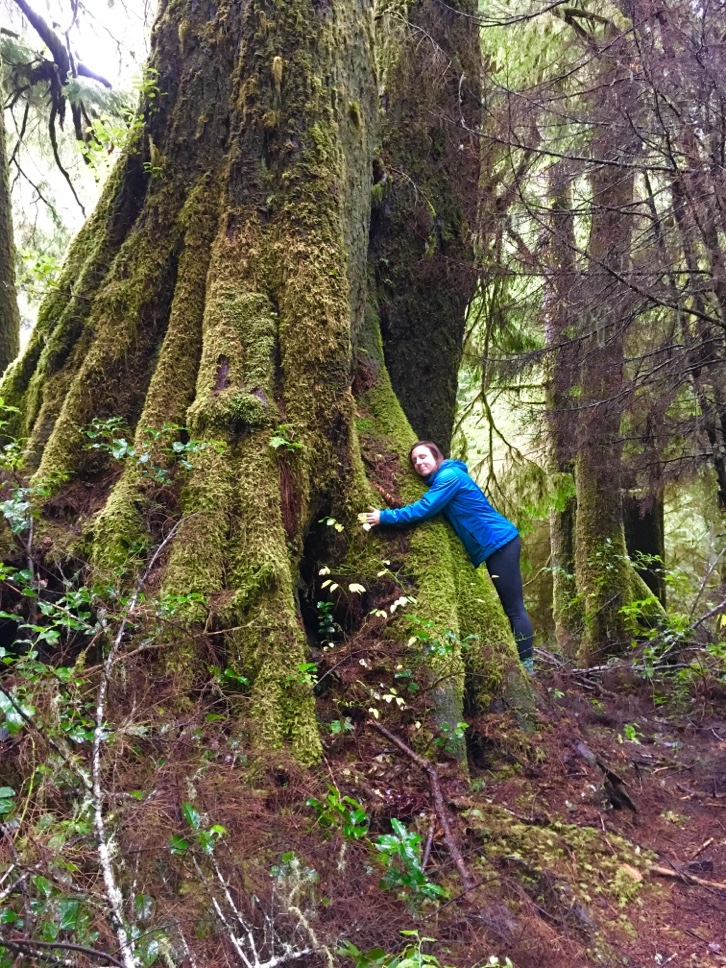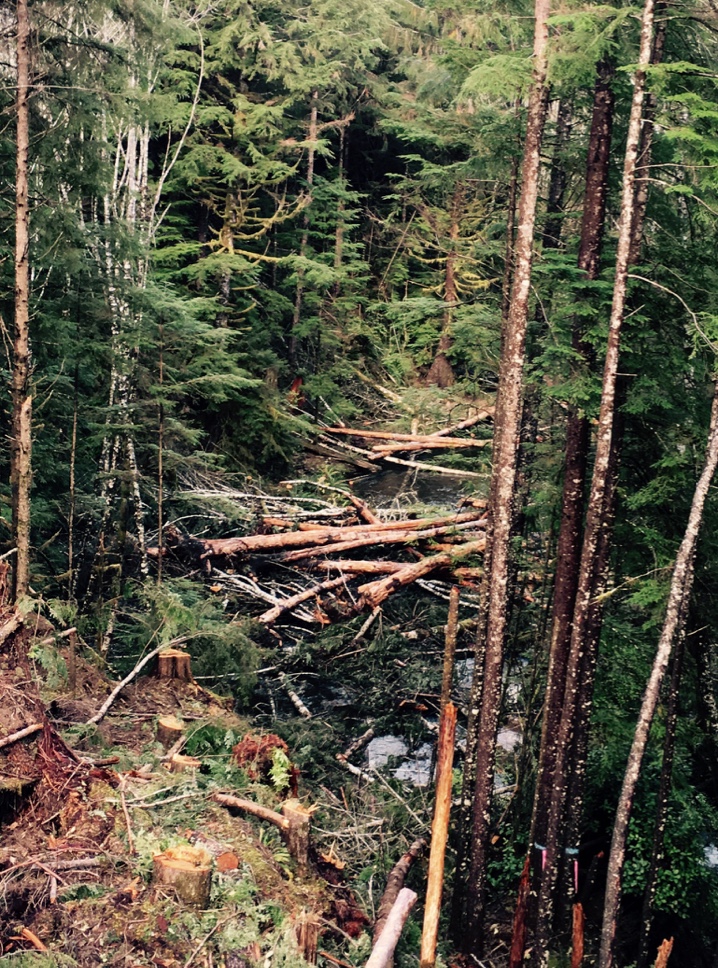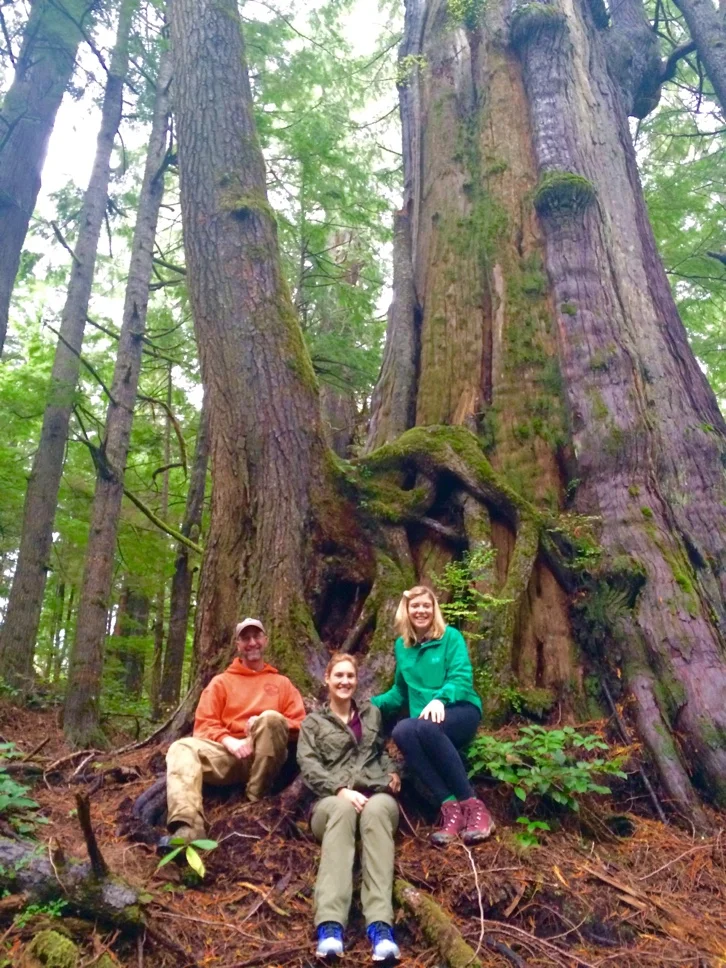Written and photographed by Claire Dawson, Hershman Marine Policy Fellow
On our way to the Marine Resource Committee Summit in Long Beach, Washington, several members of the Marine Team here at The Nature Conservancy got the chance to visit forester, Dave Ryan, at Ellsworth Creek Nature Preserve. This 7,600 acre preserve encompasses an entire watershed, and links with the Willapa National Wildlife Refuge. Together these provide more than 15,000 acres of refuge to species like nesting marbled murrelets, cougar, black bears, elk, amphibians, and salmon.
Our visit began with a tour of the recent log jams that have been installed upstream on Ellsworth Creek. These jams, while appearing to be no more than piles of brush and logs thrown haphazardly across a stream, are in fact an important natural feature of creeks and rivers. For decades, woody debris was removed from rivers and streams to promote navigation, recreation and beautify river beds. However, recent research has shown us that removing debris is detrimental to fish habitat. Recent creek restoration efforts have therefore focused on rebuilding these essential features.
By forcing the water over, under and around them, log jams slow the water and allow historical flood plains around creeks and rivers to fill and pool with water, providing a more favorable environment for returning adult salmon and growing fry. Slowing water flow also allows the deposit of larger sediment like rocks and rubble further upstream, creating the habitat needed for salmon to build redds and lay their eggs. These newly established woody areas also lower stream temperature by providing shaded environments, and somewhere to hide. Properly engineered, they also serve to reinforce creek beds, preventing erosion.
The Ellsworth Creek Preserve also encompasses an area of old growth Sitka spruce and Western red cedar. Following a one-mile trail down into the valley, we walked among giants, some over 800 years old to what’s known as Ellsworth Beach. With the recent rains and cooler weather, the group had hoped to see that the Chum had arrived in this part of the creek. Alas, the Chum prefer to arrive in solitude, and waited until the following day to show up in droves.
Our visit to Ellsworth served as a wonderful reminder of the interconnectedness of nature – and the various elements that work together to create habitat that is ‘just right’ for some of our region’s most beloved species. Conservation progress has implications far beyond the lands we walk on, and progress made on land has rippling effects all the way out to the deep blue sea.
































